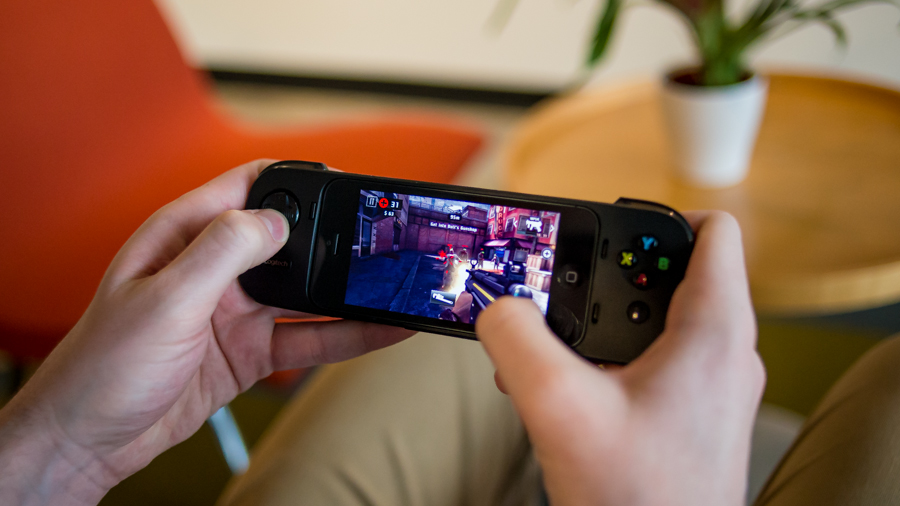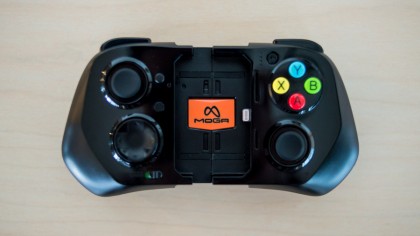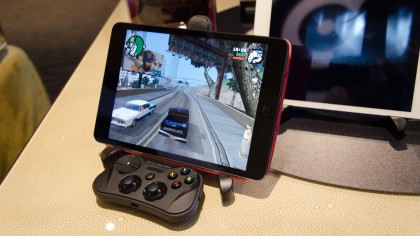Out of control: why iOS games controllers aren't console killers...yet
It's not game over for iOS controllers but something needs to change

When Apple announced official games controller support as part of iOS 7, it was thought that the world would be overrun with manufacturers looking take advantage of this gaming opportunity.
So far, though, there is just a handful of controllers on the market: the Logitech PowerShell, which is the simplified case controller; the MOGA Ace Power, an extended control case; and the SteelSeries Stratus is a wireless controller.
The reception for this first batch of controllers has been somewhat rocky. When you consider that these controllers are certified as part of the Made For iPhone (MFi) program – meaning that Apple has officially approved their quality – it's perhaps surprising to see such a difficult launch for what could be a key new area for Apple. So what's going on?
"The speed with which we had put [the Ace Power] together was a very accelerated product development cycle," explained James Szubski, director of marketing at BDA, which makes the MOGA Ace Power controller.

The problem for developing these early controllers is that being an innovator often means overcoming unforeseen hurdles.
"Being the first one is great, but it also means that along the way, we may come across challenges that none of us expected," explains Craig Olsen, president of SteelSeries Mobile.
"We were the first wireless controller, so obviously for us getting Stratus through was different and in some ways a lot more work than future wireless controllers. But a lot of the great value of the process is that things that consumers would never see are dealt with in the typically thoughtful and incredibly thorough Apple fashion. Things way under the surface are being very carefully measured and considered. It's a challenging process, but one that's incredibly important."
Sign up for breaking news, reviews, opinion, top tech deals, and more.
Feel better
One thing that came up consistently in early reviews were questions over the feel of the buttons, with early reports suggesting that Apple was forcing manufacturers to use a particular supplier for the switches. Though the companies are limited in what they can say about their licensing deals, it appears this isn't entirely true.
Apple does require manufacturers to use a particular type of switch (ones that are pressure-sensitive rather than digital), but Mark Prince, director of Signal, a new hardware company that's creating an iOS controller of its own, says that Apple's restrictions on the switch supply are based on reliability more than anything: "There is a quality standard that's set by Apple, and it's a very high standard. For example, switches need to be tested to one million cycles. I can tell you, based on having been in the business a long time, there are a lot of third-party controllers for other platforms that don't meet that spec."

Apple's certification procedures stretch into other areas, as well. For the Stratus controller, SteelSeries had to ensure that its Bluetooth system paired with the iOS fast enough for Apple's approval. "It's really down to the hundredths of seconds," says Olsen. "That kind of detail is considered."
So while Apple may not be restricting manufacturers to use particular suppliers, it does require them to meet quality standards (which might include much more testing and additional components), and even to include features that they might have forgone otherwise, such as LEDs that indicate battery life and user status in multiplayer games, as well as the pressure-sensitive switches. "That's something new for the mobile space that I think is really revolutionary," enthuses Olsen.
Insert coin
The addition of features such as multiplayer support in wireless controllers, battery indicators and universal analogue buttons – and the high level of testing and components that come with these needs – don't come cheap.
"On a normal controller, there's a blend of analogue and digital. Apple's spec has pressure-sensitive buttons for every button on the controller. There are some exciting things that developers can do with that, but that really starts to push the price up," says Szubski.
The use of high-quality, high-cost components is something that Apple purchasers will be familiar with, but the prices of the early games controllers still came under major criticism at their launch. All costing nearly $100, many reviews and commenters said they simply didn't seem worth the money.
But Prince isn't convinced that the price was wrong in the first place. "I think gamers think about things a little bit differently than say, parents who are buying toys for their kids. When it's a self-purchase made by a gamer, I think those gamers think, 'How am I going to spend the next $100 on gaming?' One thing that the current controller vendors haven't really done is help the gaming community see the value that comes from their controller. We think that value will be more clear with our controller."

"I think the statement that '$100 is not an unreasonable price' is accurate because there is unprecedented value with these controllers with iOS 7 support, but whether we like it or not, consumers have this idea that controllers that are available on a mass basis should be priced between $40 and $70," says Olsen.
Despite the price drops, Prince maintains the need to be realistic about what is possible for controller manufacturers, which comes heavily down to economies of scale, where the more you make of something, the cheaper you can make it for.
"Sony sold a million units in their first week, and they undoubtedly produced two or three million controllers in their initial production run of the PS4 controller," he adds. "The comparison to the Sony controller from a consumer point of view is very fair, but from a business point of view, it's very, very different."
Harder than it looks
The biggest way for these controllers to seem more valuable is surely to have a huge range of games available to play. The good news is that they're off to a strong start.

"Between the time the first controller shipped in November and today, 120 controller-compatible titles have appeared in the store. The new generation consoles hope to have 100 titles in the first year. Apple got 100 titles within 90 days of launch," Prince enthuses.
However, while Apple has made it easy for developers to implement basic support for iOS 7 games controllers, the whole package is actually a little more complicated than it seems. For example, there are different levels on which a game might support these controllers.
The most basic level – offering game controls mapped to the buttons on the hardware – is relatively simple. Apple's guide means it can be done in a matter of minutes for many developers – especially those that already supported earlier unofficial controller initiatives. Game engine provider Unity, which powers many of the platform's most popular titles, has even included iOS 7 controllers in its general controller interface for developers, meaning that if a Unity game supports almost any other kind of controller, it can almost definitely support iOS 7 ones with little effort – this alone could guarantee a strong level of support.
The future of gaming?
Interestingly, while the current crop of games controllers is focused on the 'mobile' element, most manufacturers we spoke to said that they're working on full-size (meaning comparable in size to an Xbox 360 or PlayStation pad) wireless controllers for the future. Signal's RP1 is due within a few months; MOGA has announced the REBEL, a wireless controller with an arm for holding your phone; and Mad Catz's C.T.R.L.i is based on its well-regarded MLG Pro Circuit Xbox and PlayStation controller.
It's clear to these companies that there's something worth pursuing here. As part of its sponsorship of the game Field of Battle, MOGA has been looking into players' response to controllers, too. "What they're seeing is that players who have a controller play twice as long, the retention rate is double – they stick with the game. What that tells us, which isn't a big surprise, is that when you're playing a mobile game with a controller, it's a much more engaging activity," enthuses Szubski.

Intriguingly, when talking about the future possibilities of the market, every single manufacturer we spoke to brought up Apple TV (completely unprompted) usually in the same breath as talking about the larger controllers. All seemed to believe that it represents a major future possibility for these controllers. It's very possible that the iOS 7 controller initiative is a cunning ploy by Apple to have developers adapt their games for an Apple TV console before one is even announced – but that's just speculation.
Regardless, despite the difficult birth of iOS games controllers, the possibilities are just starting to open up. The hope is that more console games will be encouraged to come to iOS, so the controllers start to seem worth their prices. "We've seen what's coming 12, 18 months from now, and we're talking about fully fledged, console-like gaming experiences. What we're trying to do with products like C.T.R.L.i is stick a flag in the ground," says Verrey, global PR and communications director at Mad Catz.
"When I tell you that in three years, more people will be playing with a mobile controller than a console controller, that's not a fantasy," says Szubski. "What's coming to mobile is going to revolutionise gaming."